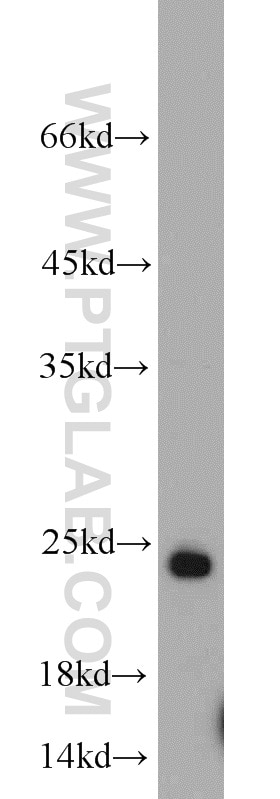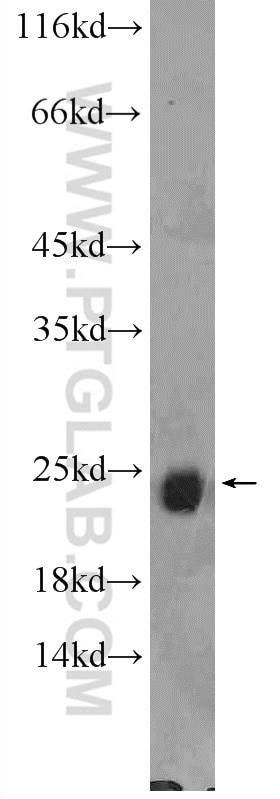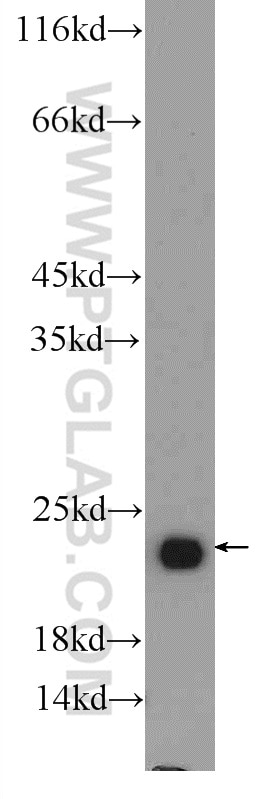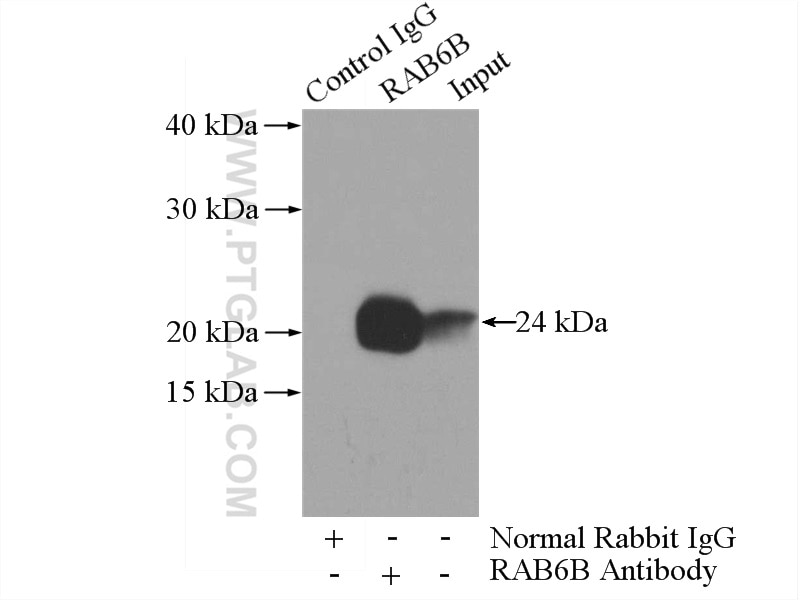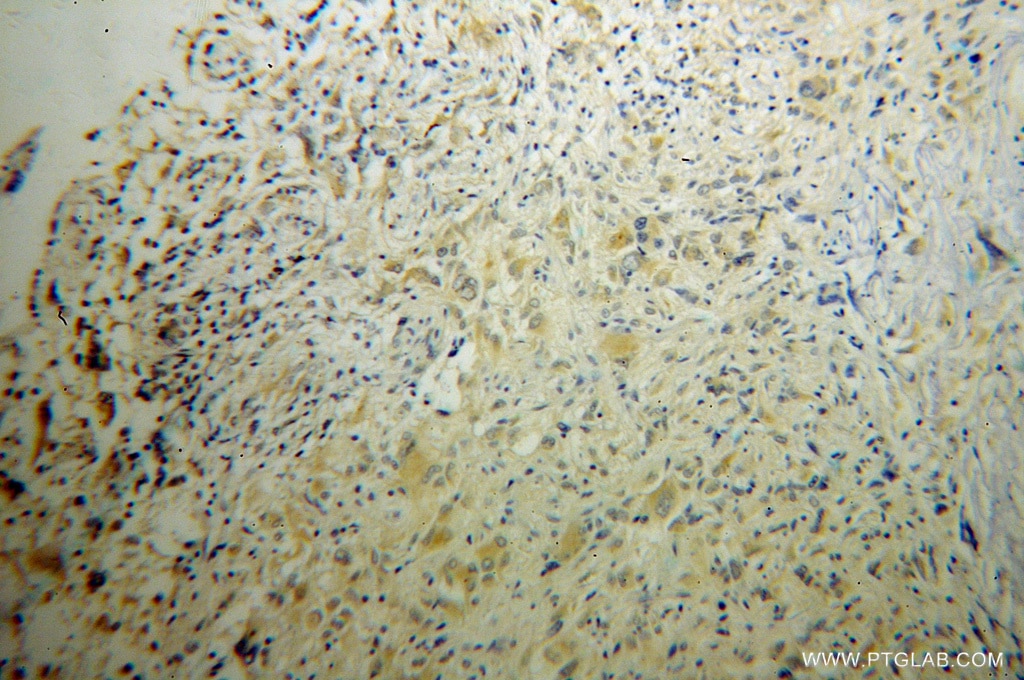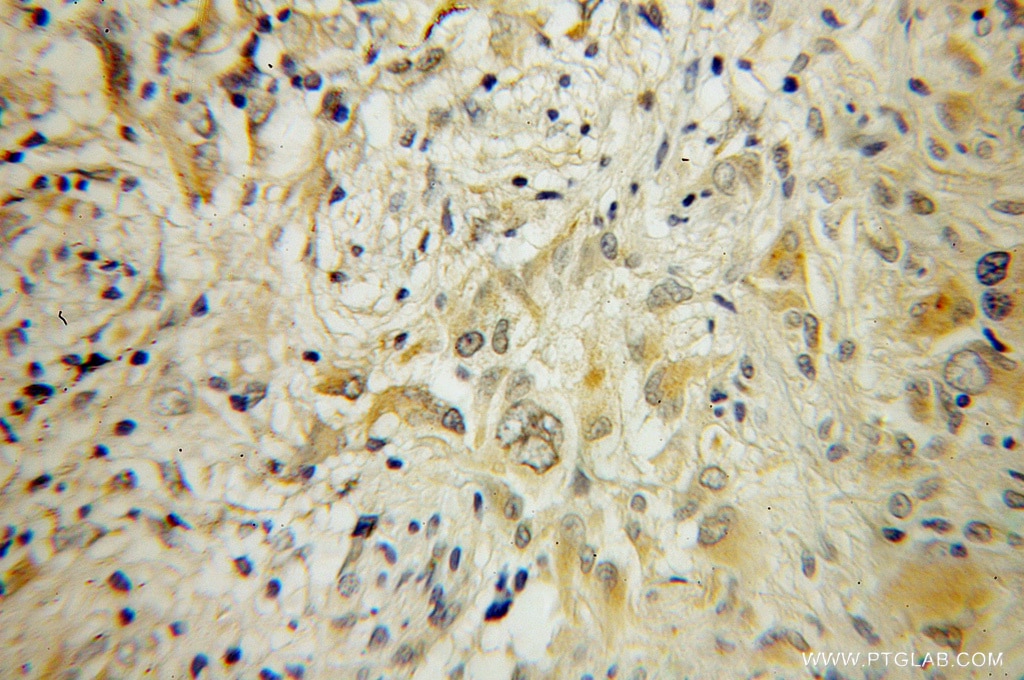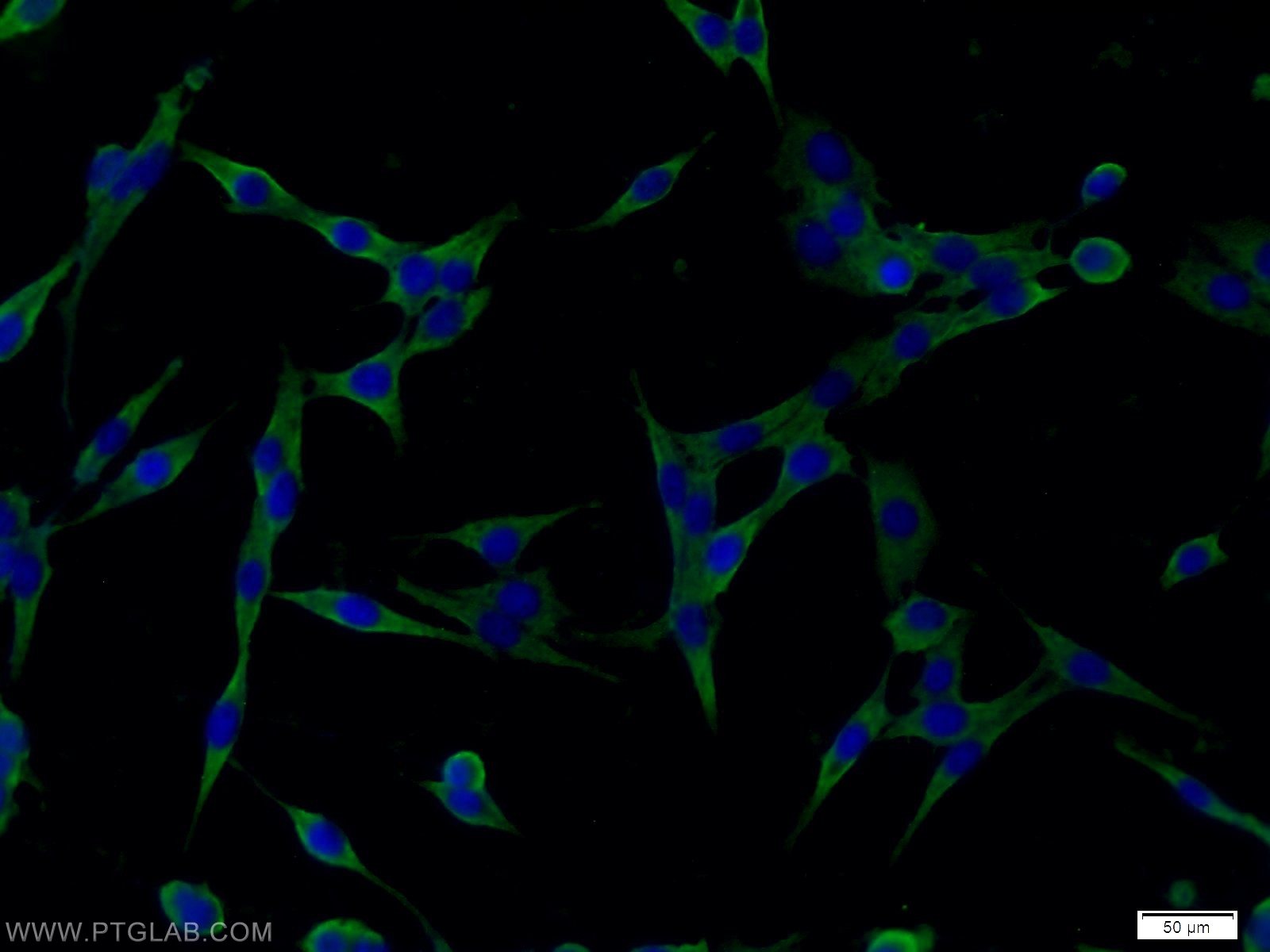- Phare
- Validé par KD/KO
Anticorps Polyclonal de lapin anti-RAB6B
RAB6B Polyclonal Antibody for WB, IP, IF, IHC, ELISA
Hôte / Isotype
Lapin / IgG
Réactivité testée
Humain, rat, souris
Applications
WB, IHC, IF/ICC, IP, ELISA
Conjugaison
Non conjugué
N° de cat : 10340-1-AP
Synonymes
Galerie de données de validation
Applications testées
| Résultats positifs en WB | tissu cérébral de souris, cellules C6, tissu cérébral de rat |
| Résultats positifs en IP | tissu cérébral de souris |
| Résultats positifs en IHC | tissu de gliome humain il est suggéré de démasquer l'antigène avec un tampon de TE buffer pH 9.0; (*) À défaut, 'le démasquage de l'antigène peut être 'effectué avec un tampon citrate pH 6,0. |
| Résultats positifs en IF/ICC | cellules C6 |
Dilution recommandée
| Application | Dilution |
|---|---|
| Western Blot (WB) | WB : 1:500-1:2000 |
| Immunoprécipitation (IP) | IP : 0.5-4.0 ug for 1.0-3.0 mg of total protein lysate |
| Immunohistochimie (IHC) | IHC : 1:20-1:200 |
| Immunofluorescence (IF)/ICC | IF/ICC : 1:10-1:100 |
| It is recommended that this reagent should be titrated in each testing system to obtain optimal results. | |
| Sample-dependent, check data in validation data gallery | |
Applications publiées
| KD/KO | See 1 publications below |
| WB | See 2 publications below |
| IF | See 1 publications below |
Informations sur le produit
10340-1-AP cible RAB6B dans les applications de WB, IHC, IF/ICC, IP, ELISA et montre une réactivité avec des échantillons Humain, rat, souris
| Réactivité | Humain, rat, souris |
| Réactivité citée | rat, souris |
| Hôte / Isotype | Lapin / IgG |
| Clonalité | Polyclonal |
| Type | Anticorps |
| Immunogène | RAB6B Protéine recombinante Ag0322 |
| Nom complet | RAB6B, member RAS oncogene family |
| Masse moléculaire calculée | 23 kDa |
| Poids moléculaire observé | 24 kDa |
| Numéro d’acquisition GenBank | BC002510 |
| Symbole du gène | RAB6B |
| Identification du gène (NCBI) | 51560 |
| Conjugaison | Non conjugué |
| Forme | Liquide |
| Méthode de purification | Purification par affinité contre l'antigène |
| Tampon de stockage | PBS avec azoture de sodium à 0,02 % et glycérol à 50 % pH 7,3 |
| Conditions de stockage | Stocker à -20°C. Stable pendant un an après l'expédition. L'aliquotage n'est pas nécessaire pour le stockage à -20oC Les 20ul contiennent 0,1% de BSA. |
Informations générales
The human RAB genes share structural and biochemical properties with the Ras gene superfamily. Accumulating data suggests an important role for RAB proteins either in endocytosis or in biosynthetic protein transport. The transport of newly synthesized proteins from endoplasmic reticulum to the Golgi complex and to secretory vesicles involves the movement of carrier vesicles, a process that appears to involve RAB protein function. Rab6A has been shown to be a regulator of membrane traffic from the Golgi apparatus towards the endoplasmic reticulum (ER). Rab6B is encoded by an independent gene which is located on chromosome 3 region q21-q23. In contrast to Rab6A whose expression is ubiquitous, Rab6B is expressed in a tissue and cell-type specific manner. Rab6B is predominantly expressed in brain and the neuroblastoma cells. In brain, Rab6B was found to be specifically expressed in microglia, pericytes and Purkinje cells. Endogenous Rab6B localises to the Golgi apparatus and to ERGIC-53-positive vesicles. Comparable studies between Rab6A and Rab6B revealed distinct biochemical and cellular properties. Rab6B displays lower GTP-binding activities and is distributed over Golgi and ER membranes, whereas Rab6A is more restricted to the Golgi apparatus. Since the GTP-bound form of Rab6B does interact with all known Rab6A effectors, including Rabkinesin-6, the results suggest a cell-type specific role for Rab6B in retrograde membrane traffic at the level of the Golgi complex.
Protocole
| Product Specific Protocols | |
|---|---|
| WB protocol for RAB6B antibody 10340-1-AP | Download protocol |
| IHC protocol for RAB6B antibody 10340-1-AP | Download protocol |
| IF protocol for RAB6B antibody 10340-1-AP | Download protocol |
| IP protocol for RAB6B antibody 10340-1-AP | Download protocol |
| Standard Protocols | |
|---|---|
| Click here to view our Standard Protocols |
Publications
| Species | Application | Title |
|---|---|---|
J Neuroimmunol Autoantibody against the Rab6A/Rab6B in primary autoimmune cerebellar ataxia associated with Sjogren's syndrome: A case report. | ||
EMBO Rep RAB6 and dynein drive post-Golgi apical transport to prevent neuronal progenitor delamination
|
Avis
The reviews below have been submitted by verified Proteintech customers who received an incentive forproviding their feedback.
FH Sahil (Verified Customer) (09-02-2020) | Works great as expected.
|
